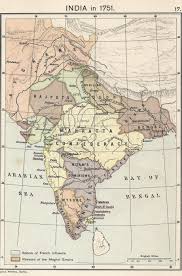The Magnificence of the Mughal Empire: An Overview

Introduction
The Mughal Empire, established in the early 16th century, stands as one of the most significant and influential empires in Indian history. Known for its remarkable contributions to art, architecture, and culture, the Mughal Empire not only transformed the Indian subcontinent but also left a lasting impact on the world. Understanding the legacy of this grand empire is not just about appreciating its past; it sheds light on the historical context that still shapes modern India today.
The Rise of the Mughal Empire
The Mughal Empire began with Babur, a descendant of Timur and Genghis Khan, who founded the dynasty after his victory in the First Battle of Panipat in 1526. The empire expanded significantly under his grandson, Akbar, who implemented a policy of religious tolerance, fostered cultural integration, and expanded the empire’s territory through conquest and diplomacy. By the late 17th century, under Shah Jahan, the Mughal Empire reached its zenith, marked by architectural marvels such as the Taj Mahal.
Architectural Achievements
The Mughal Empire is renowned for its architectural advancements. The integration of Persian, Indian, and Islamic styles led to the creation of stunning monuments. The Taj Mahal, built in memory of Mumtaz Mahal, is perhaps the most iconic of these; it symbolizes love and stands as a UNESCO World Heritage site. Other notable structures include the Red Fort in Delhi and the Fatehpur Sikri complex, showcasing the opulence of Mughal architecture.
Cultural Impact and Legacy
The Mughals were not just conquerors; they were also great patrons of the arts and culture. Under their rule, painting, literature, music, and cuisine flourished. The Persian influence fused with Indian aesthetics to create a unique style that can still be seen in modern Indian culture. The period also witnessed the establishment of new literary forms and contributions to science and philosophy.
The Decline of the Empire
Despite its grandeur, the Mughal Empire began to decline in the 18th century due to various factors, including internal strife, economic difficulties, and the rise of regional powers. The British colonization in the 19th century marked the end of the Mughal reign, but the echoes of this empire persist in the cultural fabric of India today.
Conclusion
The Mughal Empire’s significance extends beyond its historical reign; it serves as a critical lens through which to understand contemporary Indian society. The rich cultural tapestry, monumental architecture, and advancements initiated during this period continue to influence India. As we delve deeper into the legacy of the Mughal Empire, we gain insights into our past, enriching our understanding of identity and heritage in today’s context.









